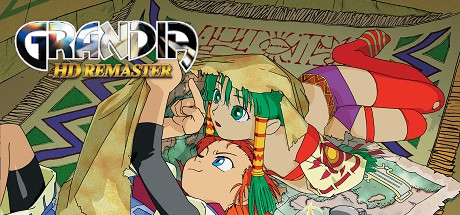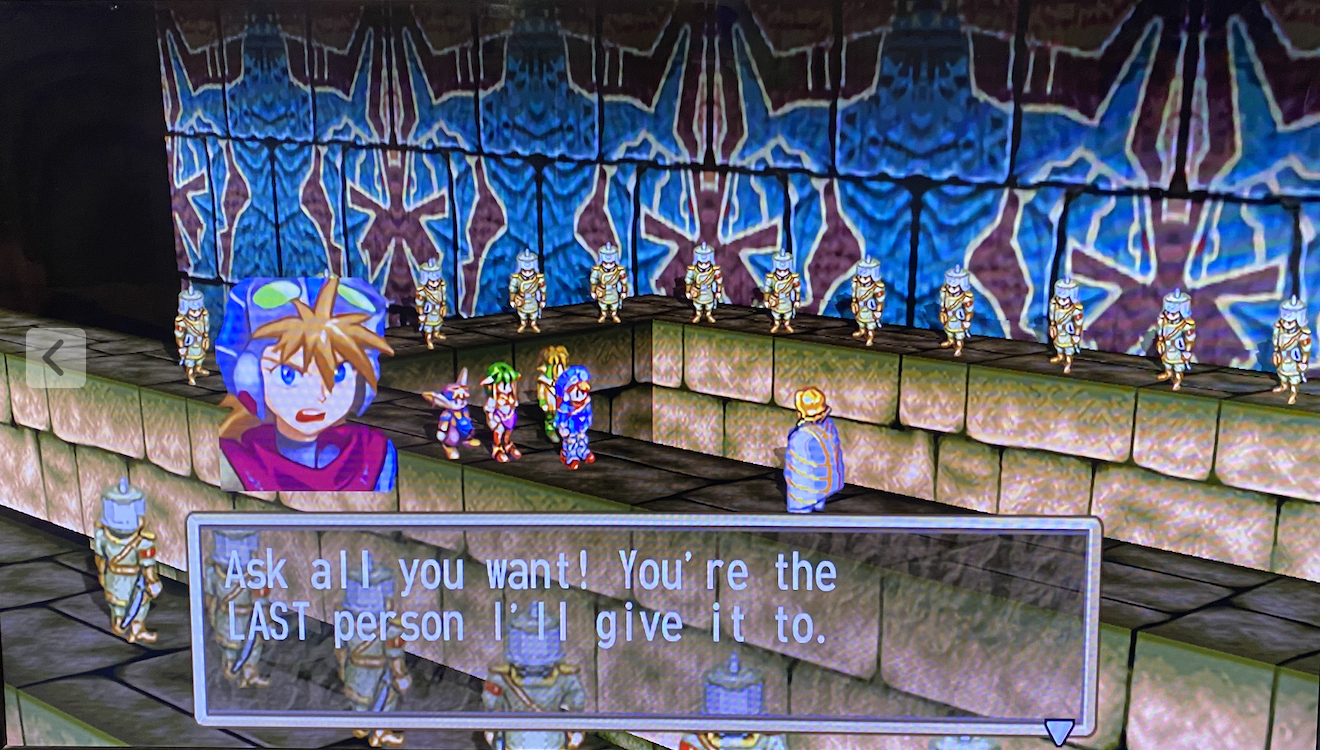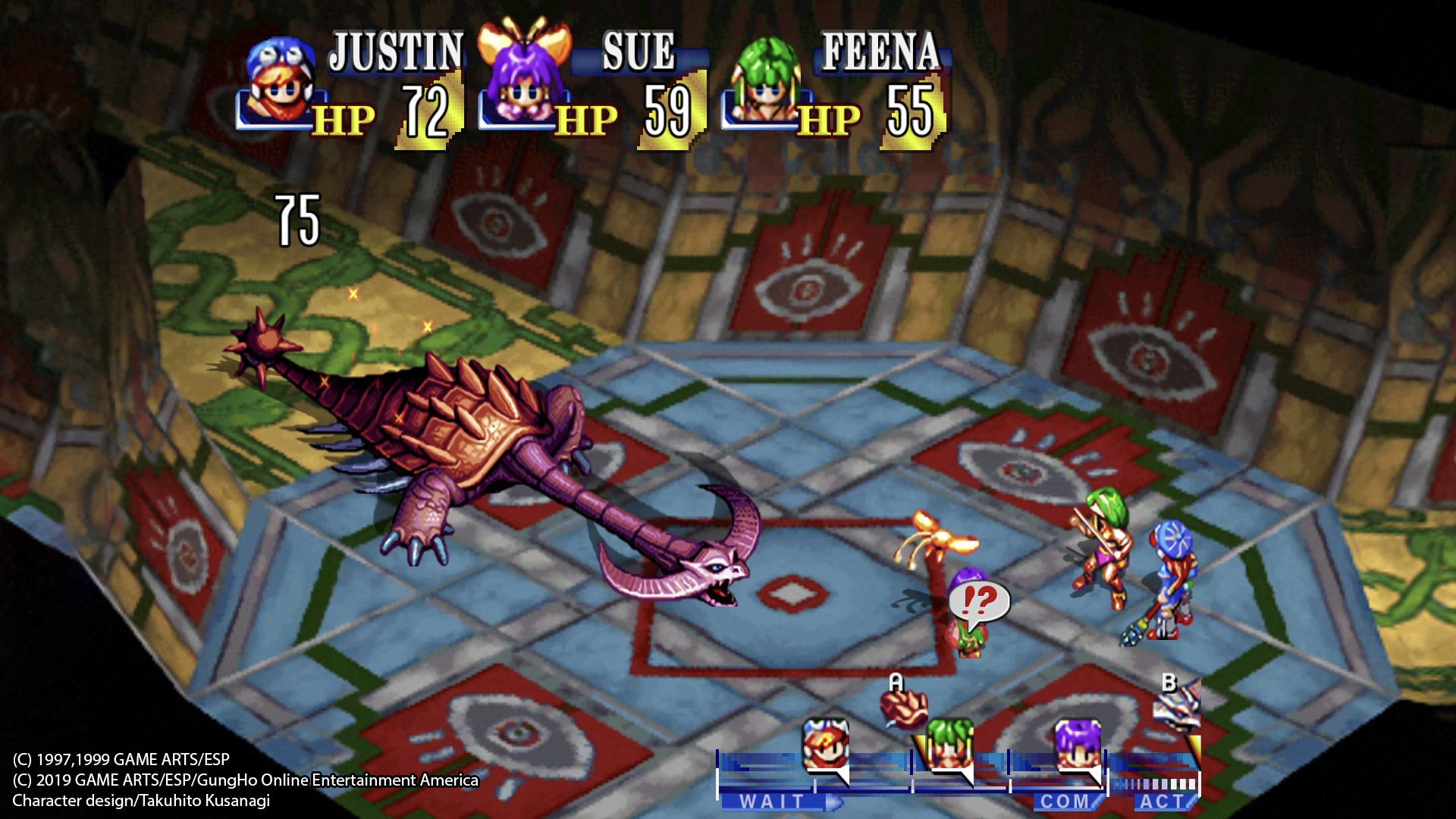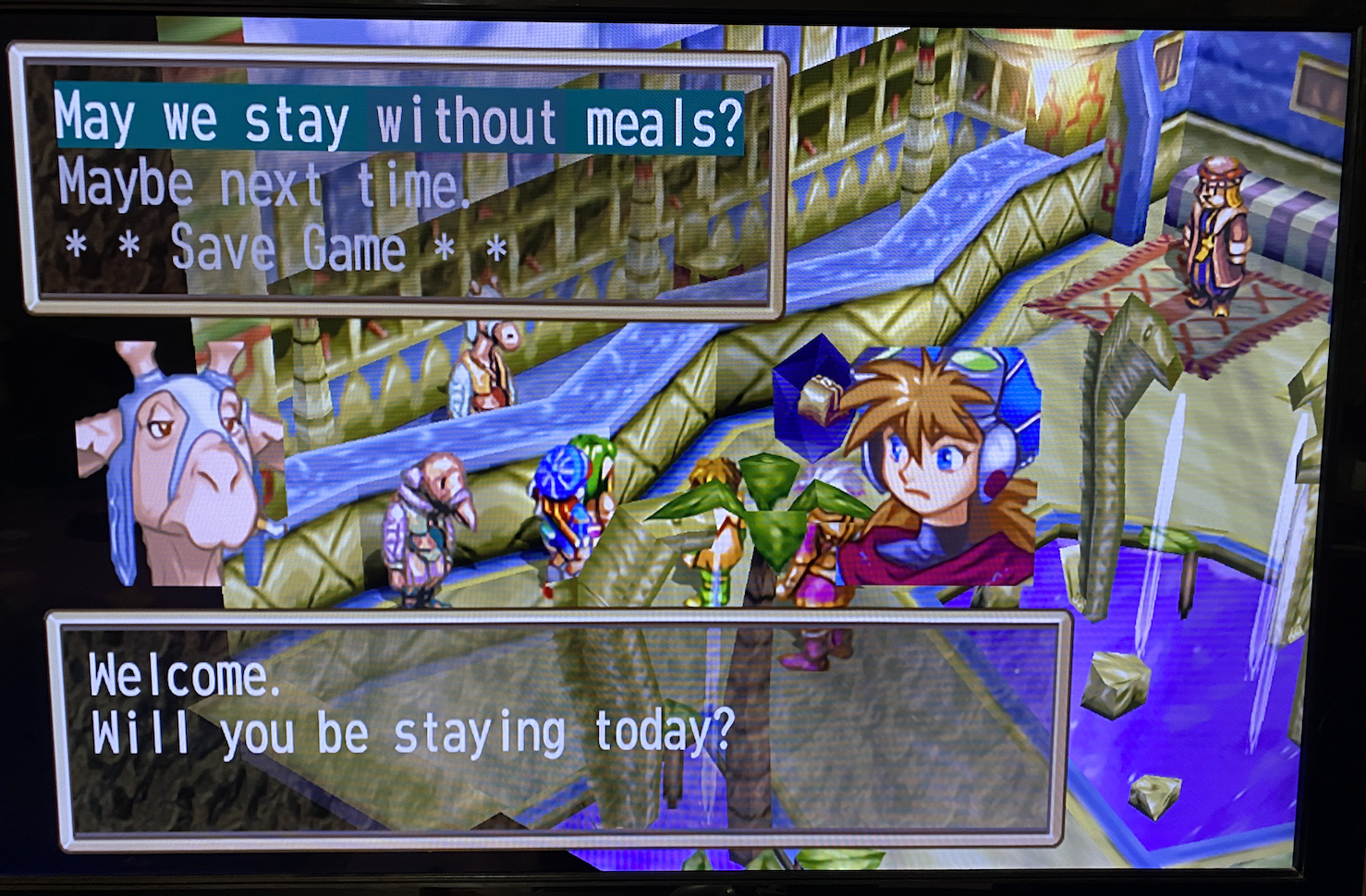
The Angelou Civilization, Minus Maya
Once upon a time, Sony had emerged as a competitor in the video game market with its PlayStation console, originally intended to be a compact disc add-on for Nintendo’s Super NES before negotiations fell through. Sega had also released its Saturn console to provide competition for Sony’s system, receiving a decent catalog of exclusive games like the Game Arts-developed RPG Grandia. However, due to Sega executive Bernie Stolar’s prejudice against Japanese roleplaying games, Anglophone gamers were denied a translated version, Stolar having had similar policies when he headed Sony of America.

However, Grandia would be ported to the PlayStation and receive a full English translation, seeing release in 1999 two years after the Sega Saturn version. Critics and audiences would extol it as one of the greatest RPGs ever made, given its unique battle system, but it had its share of detractors critical of various technical issues, the sloppy translation, and the horrible English voicework that would go for decades unaddressed, after which the game received a remaster, along with its first sequel, to the Nintendo Switch and Windows. This rerelease provided a prime opportunity to rectify the various issues of the PlayStation version, but does it?
Grandia opens in the city of Parm with Justin, an aspiring adventurer, having a “duel” with his rival Gantz that involves finding faux legendary pieces of equipment scattered throughout town. Justin also has an enigmatic artifact from his absentee father, the Spirit Stone. Thus, he searches the nearby ruins to gather clues, with the Garlyle Forces, led by General Baal and his son Colonel Mullen, expressing similar interest. The result is a grand adventure by Justin as he embarks on a quest to discover the mysteries of the ancient and hilariously named Angelou civilization with the help of others while dealing with the adversarial military.
The quality of the narrative is inconsistent, with the initial rivalry with Gantz being asinine, along with countless fetch quests that contribute little to the central storyline, not to mention countless tried tropes like an absentee father and an ancient civilization, as well as pitiful attempts at humor and glacial plot pacing. However, the game backstory is decent for Angelou and the inhabited world. Many plot beats work well also, like the different and sometimes animal races, a few decent twists, serviceable attempts at comic relief like the three female sergeants Justin and his party repeatedly encounter, and the satisfying ending. Regardless, the story is average at best.
While the Grandia series now falls under Square-Enix ownership, publisher GungHo sadly made no effort to update the sordid translation by Sony America that plagued the PlayStation version, intact and reused in the remaster. Terrible names such as Gantz and Tentz, compressed item names in the game menus, spelled-out laughter, crying, and grunting, overuse of ellipses and exclamation points, unnatural battle dialogue, lousy spell names like “WOW!”, poor writing like “I, (insert name here),” and so forth, heavily abound. The text is legible, and the translation makes some attempts at dialects for specific regions and races. However, the game localization is one of many areas where the HD remaster was a wasted opportunity.

The Game Arts franchise has received near-universal praise for its game mechanics, which remain unchanged from the original Saturn and PlayStation versions of Grandia. On fields connecting towns and in dungeons, visible enemies abound, with contact resulting in the game taking players to a separate screen for combat. However, rather than take cues from the visible encounter systems of previous RPGs like EarthBoundand Chrono Trigger, the inaugural entry instead has all foes that Justin and company draw near charge his party, regardless of how powerful they are, with a few enemies having cheap movement patterns such as disappearing from the field and reappearing somewhere else.
How contact between Justin’s party and the visible enemy occurs determines how combat begins. Justin contacting the foe when it hasn’t turned red to indicate alertness results in his party having the initiative, contact by the enemy on one of Justin’s allies results in them getting the upper hand, and contact by Justin with alert enemies results in battles starting standardly. Combat in Grandia is turn-based, with Justin’s party and various enemies populating the battlefield, and a gauge at the bottom of the screen, called the IP (Initiative Points) bar, indicates the order in which everyone will take their turns, its representative icons moving in real-time according to unit agility, meaning that the speed of their arrival at the Command segment can vary wildly.
When the icons representing Justin and his allies reach Command, the player receives countless options for whatever they want the character to do. These include two variations of standard attacks with a character’s equipped weapon: Combo, where they strike an enemy two times (or carry on their second attack to another foe if the first eradicates the original target); and Critical, which can cancel an enemy’s command if their icon is moving on the segment between the Command and Action points (units on either side carryout out their actions when reaching the latter). However, the timing of this is often incredibly tricky and requires excellent foresight regarding factors such as battlefield position, the rate at which an opposing unit is prepping execution of their commands, and so forth.
As with standard attacks, there are two types of defending against the enemy: standing one’s ground or evasively traversing the battlefield. Characters can also use items like in most other RPGs or attempt escape from battle, which is surprisingly reliable compared to other titles. The use of magic quickly becomes an option as well, with the player needing to acquire Mana Eggs scattered throughout the myriad enemy-infested fields and dungeons to grant a character one of four elements: Fire, Wind, Water, or Earth, which can hybrid into twin-typed spells.
Some issues abound with Mana Eggs. For one, finding the things in the first place can be difficult, given the frequent disorientation while exploring dungeons and fields, alongside the frequent loss of access to these previous areas as players advance the game. In that case, focus first on giving Justin and Feena all their elements, and only give them to Sue if you get more than three spare Mana Eggs since she eventually leaves your party. While players receive consumables to boost elemental skill levels when she and other guest characters leave your party, they are a poor substitute for an actual refund of the Mana Eggs. Regardless, if you follow this advice, the next permanent character, Rapp, will be at a huge advantage (and he joins with the Fire element). The final party member initially has all the elements, so there’s no need to worry about that.

Leveling a weapon or spell level, alongside learning new spells with level conditions satisfied, gives characters a bonus stat increase, which can be a godsend given that standard experience levels (with typical JRPG experience points acquired after battle alongside money and items) rise glacially. The game mechanics work harmoniously, combat rarely dragging on aside from unskippable and overly lengthy ability and spell animations that frequently stop the action in its tracks, and other issues abound like the unclarity of if moves, be they weapon or magic-based, can cancel enemy actions (and those of certain foes, chiefly bosses, can’t be invalidated no matter what). Regardless, the battle system deserves the praise it has received then and today.
As mentioned, significant disorientation can abound when exploring dungeons, which is most common after battles. Given the dungeon design, Grandia would have seriously benefited from in-game maps, which would have singlehandedly shaved significant superfluous playtime from the game, especially for those who want to explore every corner of dungeons. Viewpoints come where the player can receive a skyward view of where they currently are but are a poor substitute. Other control issues include the inconsistent placement of save points (but these recover all health and magic), and whichever developer decided to place them after boss battles should never be allowed to work on video games ever again.
Other issues regarding the save system include the absence of autosaving when transitioning between areas and a suspend-save. Another is the parsimonious inventory limit, with players regularly needing to decide which items to dispose of and which to keep; while Stashes to place excess goods exist, the ability to send things directly to them without being at them would have been more than welcome. However, positives exist, like the remaster never crashing when I played from start to finish, the Switch Home button halting all the action and game clock, a soft reset, the ability to trade current equipment with newer gear at shops, and the always-welcome view of stat increases or decreases when shopping for new weapons and armor.
Alongside the game mechanics, the aural presentation is another high point of Grandia, beginning with a sweeping, epic central theme with numerous remixes, alongside countless other emotional pieces with superb instrumentation. However, many tracks sound unusual, like one where vocalists repeatedly shout “GUMBO!” and endless ambient themes. Lamentably, the same sordid janitorial staff-quality English voicework from the PlayStation version returns, but players can mercifully select the Japanese voices, which are a million times better. Ultimately, the aurals are good, but new rerecorded English voice acting would have been more than welcome.
One area the remaster luckily addressed, however, is the visual presentation, significantly upscaling and adjusting to widescreen the original’s graphics consisting of two-dimensional character sprites with three-dimensional scenery, which appear smooth and polished. FMVs that hybrid CG environments and anime characters also return in upscaled glory. However, there is still much environmental pixilation and blurriness, the sprites often look weird and have chibi aspects like line eyes despite their proportions, and countless character portraits look asinine and occasionally gross regarding things like Rapp picking his nose and Pakon’s nasal drippage. Still, the graphics do their job.

Finally, the remaster is another Japanese RPG that puts quantity well above quality, with my final playtime a little over seventy hours; however, one can blaze through it quicker if lucky. Given the overdrawn longevity, alongside the lack of lasting appeal other than three extra dungeons, maxing every element and skill level, and the frequent absence of enjoyability due to the lack of numerous basic quality-of-life features and enhancements like in-game maps and the need to reference the internet to do everything (with no New Game+, no achievements, no narrative variations, no postgame content), one playthrough will be more than enough for a lifetime for most mainstream gamers.
Overall, Grandia HD has incredible aspects like its game mechanics and soundtrack. However, it is far from the masterpiece critics and audiences have extolled it to be, given its myriad issues regarding the control, narrative, English voicework, and localization, which the remaster sadly failed to address (and even the best aspects have notable flaws). Artificial longevity is another primary issue, inexcusable given the almost strictly linear game structure, with Grandia excessively overstaying its welcome. Regardless, the “iconic” Game Arts title demonstrates that video game quality, positive or negative, is a point of view. While it is often fun, it’s hardly a bucket-list game, and mainstream gamers can easily live without experiencing it.
This review is based on a playthrough of the version included with the Grandia HD Collection to completion purchased and downloaded to the reviewer’s Nintendo Switch.
| Score Breakdown | |
|---|---|
| The Good | The Bad |
| Fun battle system. Lacks PlayStation version’s technical issues. Some decent plot beats. Great soundtrack. Remastered visuals show polish. | Requires foresight at times. Very user-unfriendly. Needs maps badly. Awful translation and English voicework. Finite lasting appeal. |
| The Bottom Line | |
| Has many positive elements but is hardly the masterpiece critics and audiences have called it. | |
| Platform | Nintendo Switch |
| Game Mechanics | 7.5/10 |
| Control | 3.5/10 |
| Story | 5.0/10 |
| Localization | 0.5/10 |
| Aurals | 8.0/10 |
| Visuals | 6.0/10 |
| Lasting Appeal | 2.5/10 |
| Difficulty | Moderate |
| Playtime | 45-90 Hours |
| Overall: 5.0/10 | |
